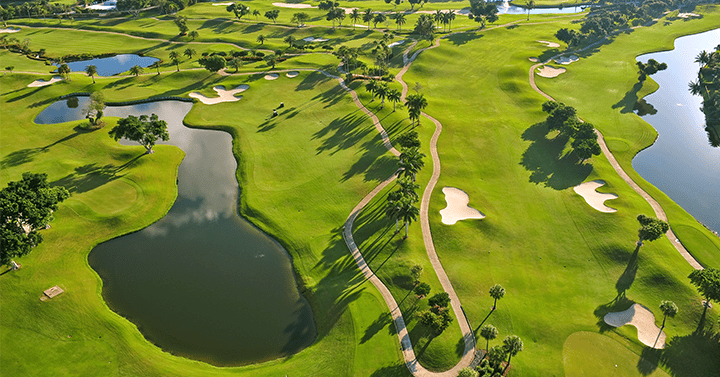Fungicides, herbicides (both pre-emergence and post-emergence), insecticides, and plant growth regulators are experiencing high growth in terms of sales volume in the United States.
According to Laura Mahecha, Director of Kline’s Agrochemicals division, the CAGR for all these segments is around 3.5%. In 2021, there were more than 14,000 golf courses in the U.S., with the most common type being 18-hole courses. This is an annual average decline of about 1.0% from an estimated 15,500 courses in 2013.
“The market for pesticides and fertilizers managed to grow even though the total number of golf course acres has decreased from 1,700,000 to 1,620,000 acres,” notes Mahecha. “Dollar growth was driven by increased pesticide usage and price increases. Our research concludes that over the last eight years, the prices of many pesticides used by golf courses went through major increases, and in several product categories, by more than 40%. While price increases are common, there is a wide range of fluctuation in terms of the amount among the products used by professionals on golf courses.” Our research showed large price increases in post-emergence herbicides and fungicides over the past eight years.
Golf courses purchase significant amounts of fertilizers, fungicides, herbicides, insecticides, and plant growth regulators (PGRs) for the maintenance of playing areas. Turf care products are routinely applied to greens, tees, fairways, and roughs to preserve a consistent playing surface that is also aesthetically pleasing. Golf courses also buy minor quantities of other pesticides, including algaecides and nematicides.
“There are many diseases being treated on golf courses, with dollar spot fungus as the most often-mentioned disease among surveyed golf course operators,” Mahecha says. “Brown patch and anthracnose were also frequently treated, although there is variation depending on the region. Daconil Action and Lexicon Intrinsic are leading brands used to treat dollar spot. Syngenta, Bayer, and BASF are leading suppliers to golf courses although the market remains rather fragmented with private label and small, regional suppliers as well.”
For more information on the subject, be on the lookout for Kline’s Professional Turf & Ornamental Market for Pesticides and Fertilizer, a comprehensive, independent appraisal of market size and segmentation, application methods, products used and costs, and market trends. Coverage includes both chemical and biologically based products, and the market is segmented into landscape contractors, horticultural nurseries and greenhouses, lawn care, institutional/sports turf, turf farms, and golf courses. The report, based on hundreds of structured surveys, will be published in August. For even more details about the study and how our Agrochemicals practice can help inform your business decisions, contact us.

